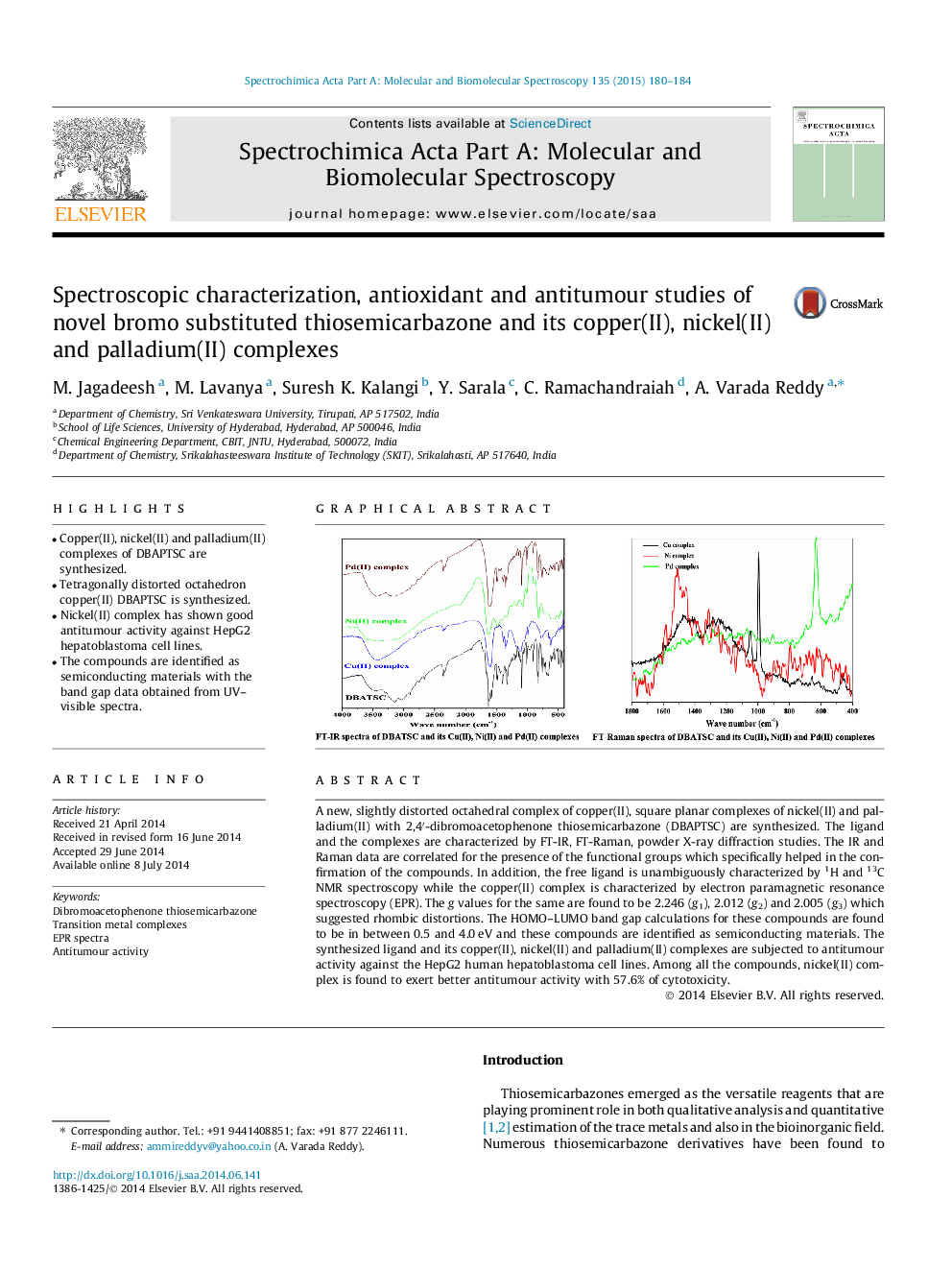| Article ID | Journal | Published Year | Pages | File Type |
|---|---|---|---|---|
| 1233178 | Spectrochimica Acta Part A: Molecular and Biomolecular Spectroscopy | 2015 | 5 Pages |
•Copper(II), nickel(II) and palladium(II) complexes of DBAPTSC are synthesized.•Tetragonally distorted octahedron copper(II) DBAPTSC is synthesized.•Nickel(II) complex has shown good antitumour activity against HepG2 hepatoblastoma cell lines.•The compounds are identified as semiconducting materials with the band gap data obtained from UV–visible spectra.
A new, slightly distorted octahedral complex of copper(II), square planar complexes of nickel(II) and palladium(II) with 2,4′-dibromoacetophenone thiosemicarbazone (DBAPTSC) are synthesized. The ligand and the complexes are characterized by FT-IR, FT-Raman, powder X-ray diffraction studies. The IR and Raman data are correlated for the presence of the functional groups which specifically helped in the confirmation of the compounds. In addition, the free ligand is unambiguously characterized by 1H and 13C NMR spectroscopy while the copper(II) complex is characterized by electron paramagnetic resonance spectroscopy (EPR). The g values for the same are found to be 2.246 (g1), 2.012 (g2) and 2.005 (g3) which suggested rhombic distortions. The HOMO–LUMO band gap calculations for these compounds are found to be in between 0.5 and 4.0 eV and these compounds are identified as semiconducting materials. The synthesized ligand and its copper(II), nickel(II) and palladium(II) complexes are subjected to antitumour activity against the HepG2 human hepatoblastoma cell lines. Among all the compounds, nickel(II) complex is found to exert better antitumour activity with 57.6% of cytotoxicity.
Graphical abstractFigure optionsDownload full-size imageDownload as PowerPoint slide
